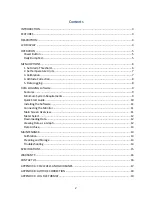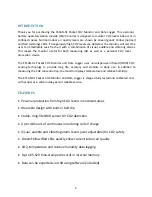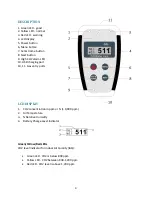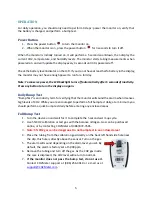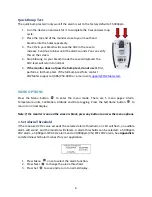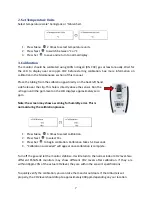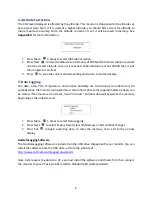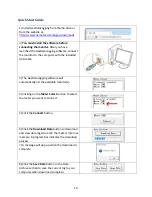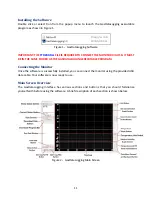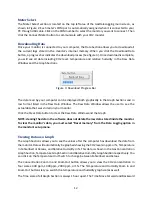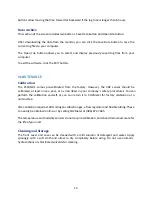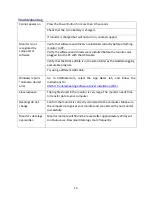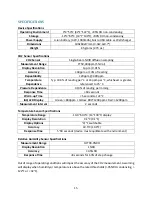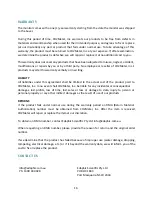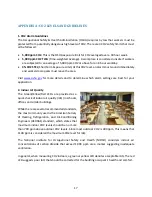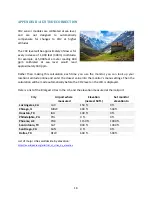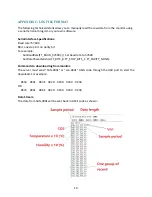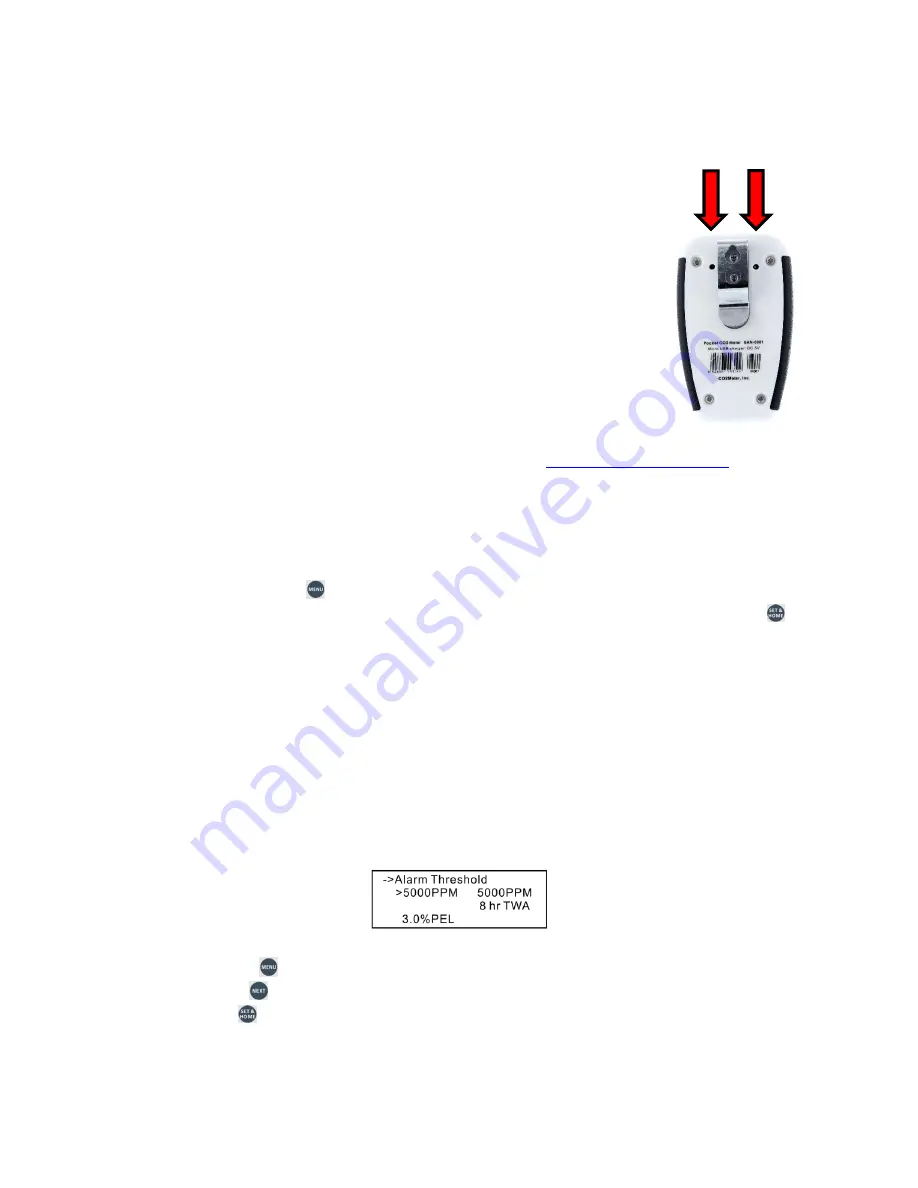
6
Quick
Bump
Test
The
quick
bump
test
will
only
work
if
the
alarm
is
set
to
the
factory
default
of
5,000ppm.
1. Turn
the
device
on
and
wait
for
it
to
complete
the
5
second
warm
up
cycle.
2. Place
the
top
end
of
the
monitor
close
to
your
mouth
and
breathe
into
the
holes
repeatedly.
3. The
CO2
in
your
breath
will
cause
the
CO2
in
the
case
to
increase.
Continue
to
blow
until
the
alarm
sounds.
You
can
verify
this
on
the
screen.
4. Stop
blowing.
As
your
breath
inside
the
case
is
displaced,
the
CO2
level
will
return
to
normal.
5.
If
the
monitor
does
not
pass
the
bump
test,
do
not
use
it
.
First,
perform
a
full
bump
test.
If
the
full
bump
test
fails,
contact
CO2Meter
support
at
(386)
256
‐
4910
or
e
‐
us
at
support@CO2Meter.com
MENU
OPTIONS
Press
the
Menu
button
to
enter
the
menu
mode.
There
are
5
menu
pages:
Alarm,
Temperature
units,
Calibration,
Altitude
and
Data
Logging.
Press
the
Set/Home
button
to
return
to
normal
display.
Note:
If
the
monitor
is
on
and
the
screen
is
black,
press
any
button
to
access
the
menu
options.
1. Set
Alarm
Threshold
If
the
measured
CO2
value
exceeds
the
selected
alarm
threshold,
an
LED
will
flash,
an
audible
alarm
will
sound,
and
the
monitor
will
vibrate.
3
alarm
thresholds
can
be
selected:
a
5,000ppm
CO2
alarm,
a
5,000ppm
TWA
CO2
alarm
and
a
30,000ppm
(3%)
STEL
CO2
alarm,
See
Appendix
A
to
determine
which
alarm
is
best
for
your
application.
1. Press
Menu
once
to
select
the
alarm
function.
2. Press
Next
to
change
the
alarm
threshold.
3. Press
Set
to
save
and
return
to
normal
display.


